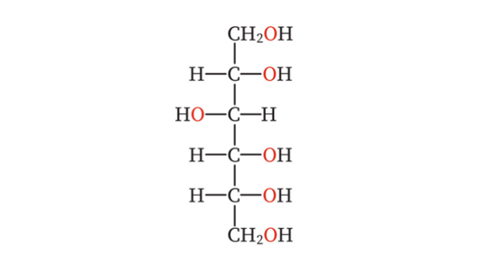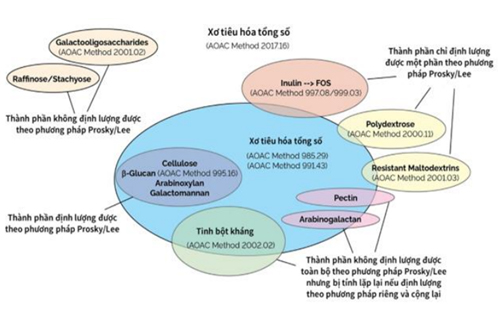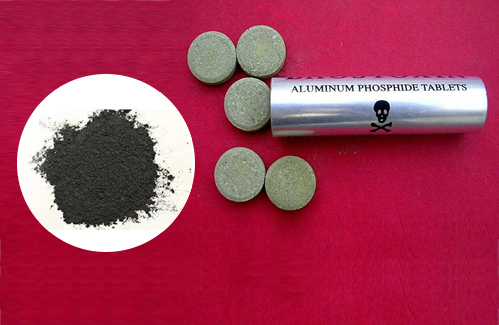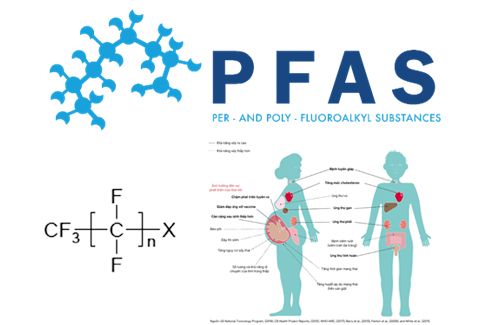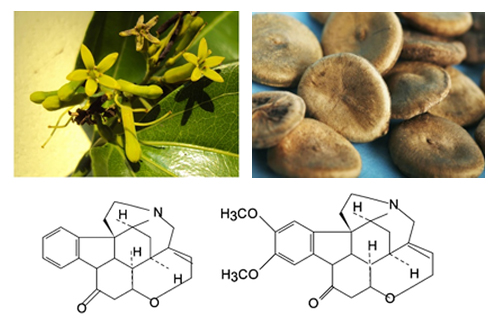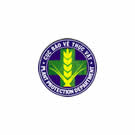- Folder Technical News
- Views 4684
- Last Updated 28/04/2023
Mushroom poisoning is caused by the ingestion of mushrooms containing toxic substances. Depending on the poisonous mushroom, symptoms can vary from mild discomfort in the gastrointestinal tract to death in about ten days.
1. The situation of mushroom-related food poisoning in Vietnam
Recently, many localities have reported food poisoning related to mushrooms. During 2020-2022, the National Institute for Food Control has received several reports of mushroom-related food poisoning, as well as analysis to determine the cause as follows:
In March 2020, in Na Hien village, Phen Pan commune, Mai Son district, Son La province, there was a poisoning of mushroom soup (mushrooms that grow naturally picked by patients while farming) occurred two people, one death. The analysis results of the National Institute for Food Control identified the fungus as Amanita exitialis and detected typical toxins in the fungus and the patient's urine, including amanitin, β-amanitin, γ-amanitin, phallacidin, and phalloidin.
In April 2020, a poisoning case in sub-district 8, Chieng Son commune, Moc Chau district, Son La province included six people who ate forest mushroom soup cooked (strange mushrooms that grow naturally collected by their families in the forest), after eating from about twenty hours, all of six showed symptoms of nausea and vomiting; abdominal pain, diarrhea, jaundice, fatigue and, most severely, delirium. The National Institute for Food Control analysis results identified the fungus as Chlorophyllum molybdites. Also, this month, in Na Ri district, Bac Kan province, there was a food poisoning incident that occurred due to eating mushrooms picked in the forest, causing four people to be dizzy, vomit, and pass loose stools many times after eating for three hours. The analysis results of the National Institute for Food Control identified the fungus as Russula emetica.
In July 2020, in Pá Po village, Pan Pan commune, Mai Son district, Son La province, there was a mushroom soup poisoning incident that caused five people abdominal pain, nausea, vomiting, bowel movements, and headaches were taken to the district emergency hospital. The analysis results of the National Institute for Food Control identified the fungus as Chlorphyllum molybdites.
In February 2021, the poisoning case in Phong Bay village, Chieng Khay, Quynh Nhai district, Son La province included four people eating fried mushrooms with sour bamboo shoots (strange mushrooms growing naturally collected by the family in the forest). After eating, for about twelve hours all the people appeared symptoms of nausea and vomiting; abdominal pain, diarrhea; headache, dizziness, and fatigue. The analysis results of the National Institute for Food Control identified the fungus as Amanita exitialis and detected typical toxins in the fungus, including amanitin, β-amanitin, γ-amanitin, phallacidin, and phalloidin.
In June 2021, in Ha Tau village, Long Ha commune, Thuan Chau district, Son La province, there was a mushroom poisoning case the cause of picking mushrooms in the hillside area near the grilling house, after eating for about thirty minutes, symptoms of abdominal pain, nausea, vomiting, fatigue. The National Institute for Food Control analysis results identified the fungus as Chlorophyllum molybdites.
In September 2021, the poisoning case in Tan Lap commune, Moc Chau district, Son La province included three people eating pumpkin mushroom soup (mushrooms growing naturally in their garden), after eating for about 05-07 hours, they all appeared symptoms of abdominal pain, nausea, vomiting, headache, dizziness, fatigue, Toxicology screening test results of soup samples, detection of Psilocin and Orellanine toxins typical for toxicity from fungi.
Most recently, in May 2022, in Lung Lau village, Khau Vai commune, Meo Vac district, Ha Giang province, there was a mushroom poisoning incident of two people suffering, patients went to visit the farm, picked wild mushrooms, and brought them home to cook soup, after eating about 1 hour appeared symptoms of fatigue, abdominal pain, vomiting, and loose stools many times. The results of the analysis of fungal samples and specimens, the detection of the fungal toxin Psilocin.

Figure 1. Toxic and non-toxic mushrooms
Mushroom poisoning occurs mainly because people do not recognize poisonous mushrooms, so they pick wild mushrooms in the forest for cooking. The most common reason for this confusion is the similarity in color and general morphology of poisonous mushrooms with edible ones.
2. Classification and poisonous symptoms
2.1. Classified by toxins, poisonous mushrooms include 8 groups:
+ Amatoxin (Cyclopolypeptid): Amanita verna, A. virosa, A. phalloides, Galerina autumnalis, Lepiota brunneoincarnata,...
+ Gyromitrin (Monomethylhydrazine): Gyromitra esculenta, G. infula,...
+ Orellanin: Cortinarius orellanus, C. speciosissimus, C. Splendens,....
+ Muscarin: Inocybe fastigiata, Clitocybe dealbata,..
+ Ibotenic Acid và Muscimol: Amanita muscaria, A. pantherina,...
+ Coprin: Coprinus atramentarius, Coprinus disseminatus,...
+ Psilocybin and Psilocin: Psilocybe sp., Panaeolus sp., Conocybe sp. and Gymnopilus sp.
+ Substances that cause digestive disorders: Chlorophyllum molybdites, Russula foetens, Omphalotus nidiformis...
Figure 2. Some fatal toxins of the amatoxin group [1]
2.2. Classified by the time of reaction:
+ Slow reaction: The first symptoms appear late, usually 6 to 40 hours (average 12 hours) after eating mushrooms, and are often deadly. For example, Amanita verna, Amanita virosa, Amanita phalloides, ... Mortality rates up to 50%.
+ Fast reaction: The first symptoms appear 6 hours after eating mushrooms. For example, Inocybe fastigiata, Chlorophyllum molybdites... Often patients recover well if emergency and basic resuscitation measures are applied promptly.
2.3. Poisonous symptoms
Poisonous mushrooms contain various types of toxins that can differ markedly in toxicity. Symptoms of mushroom poisoning can vary from mild gastrointestinal irritation to organ failure leading to death. Severe symptoms do not always occur immediately after eating, usually until toxins are distributed to the kidneys or liver, sometimes days or weeks later.
The most common consequence of mushroom poisoning is simply digestive disorders. Most "poisonous" mushrooms contain gastrointestinal irritants that cause vomiting and diarrhea (sometimes hospitalization) but usually do not cause long-term harm. However, there are some recognized mycotoxins that have specific and sometimes lethal effects.
3. Prevention and treatment of poisoning caused by poisonous mushrooms
3.1. Treatment
There is no specific therapeutic drug; mainly treats etiology and symptoms:
- In case of detection of a patient with mushroom-related food poisoning, it is necessary to notify the health authorities and transport the victim to the hospital by motor vehicle.
- Induce vomiting, and gastric lavage as soon as possible, drink activated charcoal at a dose of 1-2 g/kg body weight accompanied by 4-6 sachets of sorbitol (otherwise egg whites can be given).
- Enhance the elimination of toxins, and maintain vital functions (cardiac support, respiratory support, anticonvulsant, acute pulmonary edema).
- Testing, monitoring, and regulating electrolytes in the blood.
3.2. Prevention
- Do not pick wild mushrooms to eat
- Strengthen communication to prevent mushroom poisoning in the community, especially in localities where poisoning often occurs. Develop pictures, leaflets, and videos about poisonous mushrooms that often cause poisoning in Vietnam to serve propaganda work.
- Some of the following misconceptions should be refuted:
+ "Poisonous mushrooms are often colorful" - this is not true. For example, that the mushrooms that are often deadly in the northern provinces of our country are pure white mushrooms (white poisonous mushrooms and white poisonous mushrooms cone).
+ "Mushrooms have insects, insects eat are not poisonous" – this is not true. Fungal toxins do not act on insects, pests, ants, or snails.
+ "Try feeding animals first if they don't die, mushrooms are not poisonous" - this is only true for some species of mushrooms and some animals. Many animals are insensitive to the gastrointestinal toxin amatoxin. Moreover, fungi with amatoxin are deadly, on average, it takes twelve hours after eating mushrooms to show the first symptoms, and animals usually die on the 5th – 7th day after eating mushrooms.
+ "Test mushrooms with silver spoons, or silver chopsticks if there is a color change of poisonous mushrooms" - this is not true. Mushroom toxins do not cause silver to turn color
4. Propaganda activities for the prevention of mushroom poisoning
The National Institute for Food Control is the highest-level food testing agency, under the Ministry of Health, established under the Prime Minister's Decision No. 376/QD-TTg dated March 23, 2009. covered. The National Institute for Food Control is designated by the Ministry of Health, the Ministry of Agriculture and Rural Development, and the Ministry of Industry and Trade to serve as a testing agency for state management. The National Institute for Food Control is an arbitration testing unit nationwide for food quality and safety. In addition to performing food testing tasks to serve the state management in accordance with functions and duties, the National Institute for Food Control performs food testing services for customers in need. With the leading food testing capability in Vietnam, a laboratory with modern equipment, and a team of experienced staff and experts, the National Institute for Food Control is committed to bringing to customers the best service of food testing with the motto: Honesty, Devotion, Accuracy, Efficiency, Prestige.
In recent years, the National Institute for Food Control has identified the causes of mushroom-related food poisoning and participated in communication activities for grassroots health workers and people to prevent mushroom poisoning. One of the results of the grassroots scientific research project "Research on characteristics and identification of natural mushrooms collected in Son La province" in 2021-2022 is the Handbook for the Prevention of mushroom poisoning, which provides general information on mushroom poisoning and ways to prevent poisoning by mistake for health workers/propagandists, furthermore, it is possible to guide/propagate succinct and concise information to the people.

Figure 3. Handbook for the Prevention of mushroom poisoning
published by the National Institute for Food Control
With the desire to contribute to reducing cases of food poisoning caused by fungi and natural toxins in general, the National Institute for Food Control regularly carries out activities to investigate and identify the causes of food poisoning as well as communicate poisoning prevention. Communication activities to prevent mushroom poisoning will contribute to limiting future cases of poisoning. At the same time, timely test results will help confirm the cause of poisoning and help to treat doctors quickly take timely measures to handle poisoning cases that occur.
Handbook for the prevention of mushroom poisoning: Link pdf
REFERENCES
- Sgambelluri et al. (2014), Profiling of Amatoxins and Phallotoxins in the Genus Lepiota by Liquid Chromatography Combined with UV Absorbance and Mass Spectrometry, Toxins, 6, 2336-2347, doi:10.3390/toxins6082336
- Hướng dẫn chẩn đoán và xử trí ngộ độc (2015), quyết định số 3610/QĐ-BYT ngày 31/8/2015.
- World Health Organization (2022), WHO fungal priority pathogens list to guide research, development and public health action






